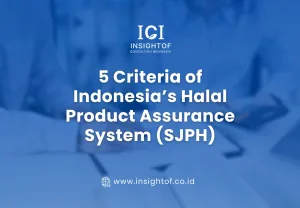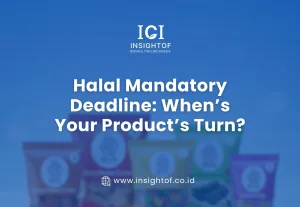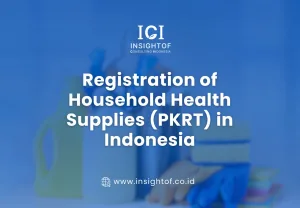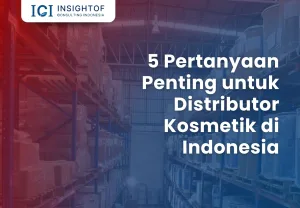Aesthetic medicine is no longer women’s domain. In fact, the global market for male aesthetics is booming: analysts estimate it was already US$14.6 billion in 2023 and could reach ~US$20.6 billion by 2030 (about 5% annual growth). This surge is driven by changing attitudes (grooming is no longer taboo for men), celebrity and social-media influence, and higher disposable incomes for young urban men.
In Asia – from South Korea to China and Japan – male beauty norms have long been accepted (K-beauty and J-beauty often target men), and these markets are seeing “significant growth” in male aesthetic procedures. Southeast Asia’s market is also expanding rapidly (projected from ~$3.0 B in 2024 to ~$6.6 B by 2032, ~10% CAGR), with Indonesia alone forecast to double from $234M in 2022 to $450M by 2028.
In short, male patients represent the fastest-growing segment of the aesthetic industry. One analysis predicts that men could account for over a third of all non-surgical procedures worldwide by 2035.
This context – globally and especially in Asia – makes clear why exporters should pay attention to men’s aesthetics today.
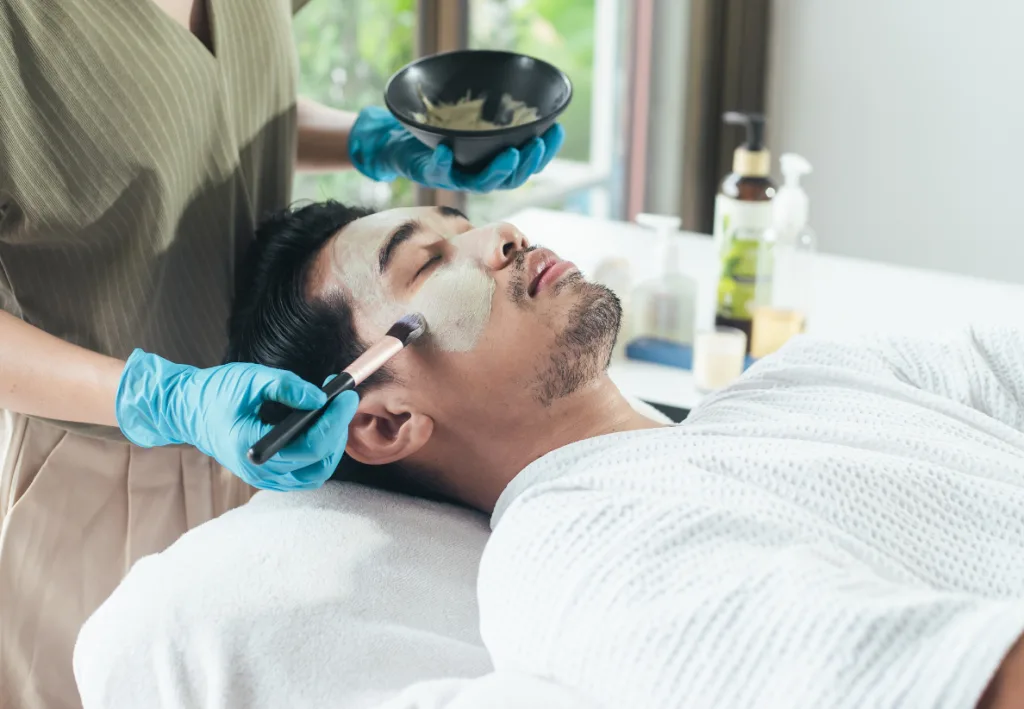
Popular Aesthetic Treatments for Men
Men now seek many of the same treatments as women, often with male-specific goals. Key trends include:
- Laser Hair Removal – Long-term hair reduction is a major grooming trend. More men are getting laser (or intense pulsed light) treatments for chest, back, shoulders and face to remove unwanted hair. Market analysts point out that laser “hair removal” is among the fastest-growing procedures for men. (Clinics often report double-digit year-over-year increases in male laser-hair clients.)
- Body Contouring – Non-invasive fat-reduction devices (like cryolipolysis/CoolSculpting, radiofrequency or ultrasound machines) are popular with men who want to sculpt abs, flanks or other areas without surgery. Chameleon Pharma lists “non-surgical fat reduction and body contouring” as a major innovation trend for men. These technologies help men address stubborn fat pockets with minimal downtime.
- Hair Restoration – Hair loss drives a huge market: men make up ~80–85% of hair transplant patients. Both surgical (FUE, FUT transplants) and non-surgical (PRP injections, topical regrowth kits) solutions are in demand. As precedenceresearch notes, the male segment dominates the hair transplant market (81% share in 2024). Exporters of hair-regrowth devices and grafting equipment should note this strong male skew.
- Skin Rejuvenation & Others – Men increasingly get treatments to improve skin tone and texture. Chemical peels, laser resurfacing, microneedling and facial rejuvenation procedures are being offered to men (often targeting acne scars, sun damage or general anti-aging). In fact, a report observed that among men “chemical peel, hair removal, and botulinum toxin” had the highest growth rates. Other popular procedures for men include eyelid lifts, rhinoplasty (nose jobs), and male breast reduction (gynecomastia correction) – all reflecting men’s desire for a fitter, younger look.
Each of these treatments often requires specialized equipment (e.g. higher-energy lasers for thick male hair, stronger filler formulas, or applicators suited to male anatomy), so foreign suppliers of the latest devices and tech can find solid demand.
Male Consumer Behavior and Preferences
Male patients behave differently from female ones. Studies and industry experts note that men typically seek “subtle” improvements rather than dramatic enhancements. They want to maintain a youthful, masculine appearance, not feminize their face. (For example, men are more likely to augment the jawline or reduce forehead lines than to plump lips.) Men also tend to delay seeking care – they underutilize preventive health and often visit clinics at a later stage. Clinics find that male clients may be reluctant at first and respond better to targeted outreach. In practice, doctors often grow their male patient base via word-of-mouth and referrals through patients’ male relatives (“fathers, brothers or boyfriends”).
Marketing to men works best when messaging emphasizes health, fitness and confidence rather than “beauty.” For instance, ads might frame Botox as a confidence boost or hair transplant as restoring vigor. Social and cultural shifts are also helping: today’s male influencers and celebrities (from K-pop stars to Hollywood actors) openly discuss skincare and injectables. In Asia especially, male celebrities set examples (e.g. K-pop idols with perfect skin), making cosmetic care more acceptable. As one consultancy notes, “men are no longer focusing only on careers and fitness but also investing in their appearance to boost self-esteem,” and social media has made aesthetic procedures more mainstream for men. In sum, male patients today expect quick, discreet treatments and appreciate clinics that clearly cater to men’s needs and privacy.
Opportunities for Foreign Exporters
With male aesthetic demand rising, exporters of equipment, products and services have a new target market. Consider these opportunities:
- Medical Devices and Equipment: Demand is high for lasers and energy-based devices (hair removal lasers, skin-fractional lasers, HIFU machines, CoolSculpting systems, radiofrequency devices, etc.) tuned to male needs. For example, Indonesia’s aesthetics market sees about 45% of revenue in skin and body-contouring devices, underscoring demand for slimming and skin rejuvenation machines. Exporters can offer male-friendly device settings or applicators (e.g. larger treatment heads for men’s back hair, deeper-penetrating lasers for coarse hair).
- Injectables and Consumables: Companies supplying neuromodulators (Botox) and dermal fillers can expand marketing to male patients. There’s also room for men-specific cosmeceuticals (serums for male skin types, hair regrowth serums). Given that men’s grooming globally is already enormous (the men’s grooming industry is projected to reach ~$81 billion by 2024), even adjacent product lines (male skincare, haircare, nutrition supplements) have synergy with medical spas.
- Services and Training: Clinics are hungry for the latest techniques. Exporters can provide training programs, turnkey clinic setups, or co-branding partnerships focused on male clients. For instance, introducing a “male aesthetics” franchise or specialized training in male facial anatomy can give clinics a competitive edge.
- Regulatory and Consulting Support: Entering new markets requires navigating local rules. Indonesia and ASEAN have stringent medical device regulations. Foreign exporters can partner with local agents or consultancies to ensure compliance. (See below on how Insightof can help in Indonesia.)
Overall, Asia – and Indonesia in particular – is ripe for these exports. Market research highlights Latin America and Asia as “high-potential” regions for male aesthetic expansion. Indonesia’s market is growing ~11.5% per year (2022–2028), and clinics there increasingly add body-sculpting and anti-aging services. Exporters who tailor their technology and messaging to men can capture a rapidly expanding slice of this multi-billion-dollar market.
INSIGHTOF: Your Partner for Indonesia Market Entry
For foreign firms eyeing Indonesia’s burgeoning male-aesthetics market, regulatory know-how is crucial. INSIGHTOF Consulting Indonesia (Jakarta-based) specializes in exactly this – medical device and cosmetic product registration under Indonesia’s Ministry of Health (Kemenkes) and BPOM regulations. With over 500 successful product registrations on record, INSIGHTOF streamlines the process of classifying devices, compiling dossiers, and obtaining approvals. We will guide you through Kemenkes/BPOM so you can confidently launch in Indonesia’s dynamic market.
In summary, the male aesthetic segment is growing fast worldwide and especially in Asia. Exporters who understand men’s preferences and seize this niche – supported by local regulatory experts like INSIGHTOF– can find significant new business opportunities supplying devices, treatments, and services tailored to the modern male consumer.
Sources: Industry reports and surveys on male cosmetics demand; specialty publications on men’s treatments; market research for Indonesia; and Insightof’s website on Indonesian device registration.



